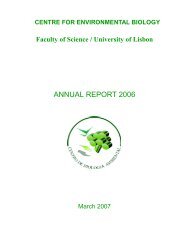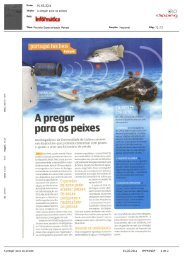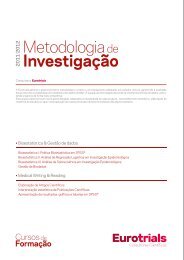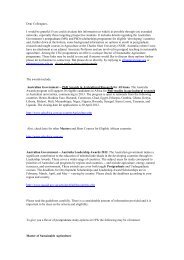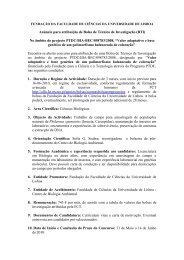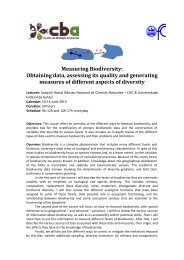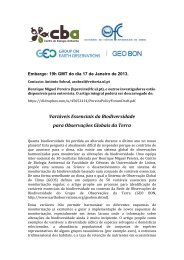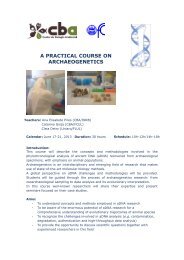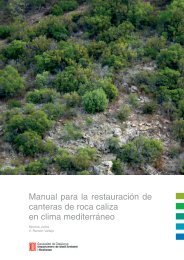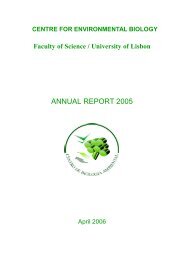European Red List of Vascular Plants - European Commission
European Red List of Vascular Plants - European Commission
European Red List of Vascular Plants - European Commission
Create successful ePaper yourself
Turn your PDF publications into a flip-book with our unique Google optimized e-Paper software.
with the predicted range in 2055. Their results indicated<br />
that for the three genera, 16–22% <strong>of</strong> species would go<br />
extinct; the majority <strong>of</strong> species showed greater than 50%<br />
loss <strong>of</strong> distributional range and the range that remained<br />
was highly fragmented, placing the extant species under<br />
greater threat <strong>of</strong> genetic erosion or extinction. The loss<br />
<strong>of</strong> such a high number <strong>of</strong> species is extremely disturbing;<br />
however, the potential range decreases <strong>of</strong> 85–94% for<br />
extant Arachis spp. reported by the authors are also a grave<br />
concern because although it is unlikely that range loss is<br />
directly correlated to genetic diversity, range loss <strong>of</strong> this<br />
magnitude must question the viability <strong>of</strong> populations in<br />
terms <strong>of</strong> retaining sufficient genetic diversity to maintain<br />
the long-term survival <strong>of</strong> the species. Although this study<br />
was <strong>of</strong> non-<strong>European</strong> crop gene pools, it is likely that the<br />
impact on CWR diversity in Europe could be similarly<br />
catastrophic.<br />
trend and 21 are thought to be stable – for 23 <strong>of</strong> these<br />
species, the population trend is unknown. It is clear that<br />
the 48 species assessed as threatened or Near Threatened<br />
with a decreasing population trend should be flagged up<br />
as an urgent priority for conservation action – particularly<br />
those endemic to Europe. Those with unknown population<br />
trends should have monitoring programmes put in place<br />
immediately and the species reported to be stable should<br />
also be closely monitored to ensure that potential changes<br />
in the trend can be reported.<br />
Figure 18. Population trends <strong>of</strong> 571 <strong>European</strong> CWR<br />
species<br />
4.6 Population trends<br />
At least 10.9% (62) <strong>of</strong> the species assessed are in decline,<br />
while for 38.7% (221) <strong>of</strong> the species the populations are<br />
considered to be stable and for a small percentage (13<br />
species) they are thought to be increasing; however, the<br />
population trend for the majority <strong>of</strong> species (48.2%) is<br />
unknown (Figure 18).<br />
Forty-eight <strong>of</strong> the 92 species assessed as threatened or Near<br />
Threatened are reported to have a decreasing population<br />
Lepidium turczaninowii is a wild relative <strong>of</strong> brassica crops and garden cress, L. sativum. It is endemic to the surroundings <strong>of</strong> Feodosija in eastern Crimea where it grows on sea bluffs<br />
and slopes. It is ecologically sensitive as it is adapted to permanent erosion <strong>of</strong> soils, moisture deficit and open plant communities. Competition from other plant species, housing<br />
developments and slope stabilization work are its main threats and it is globally assessed as Critically Endangered. Photograph © Viktor Melnyk.<br />
32



